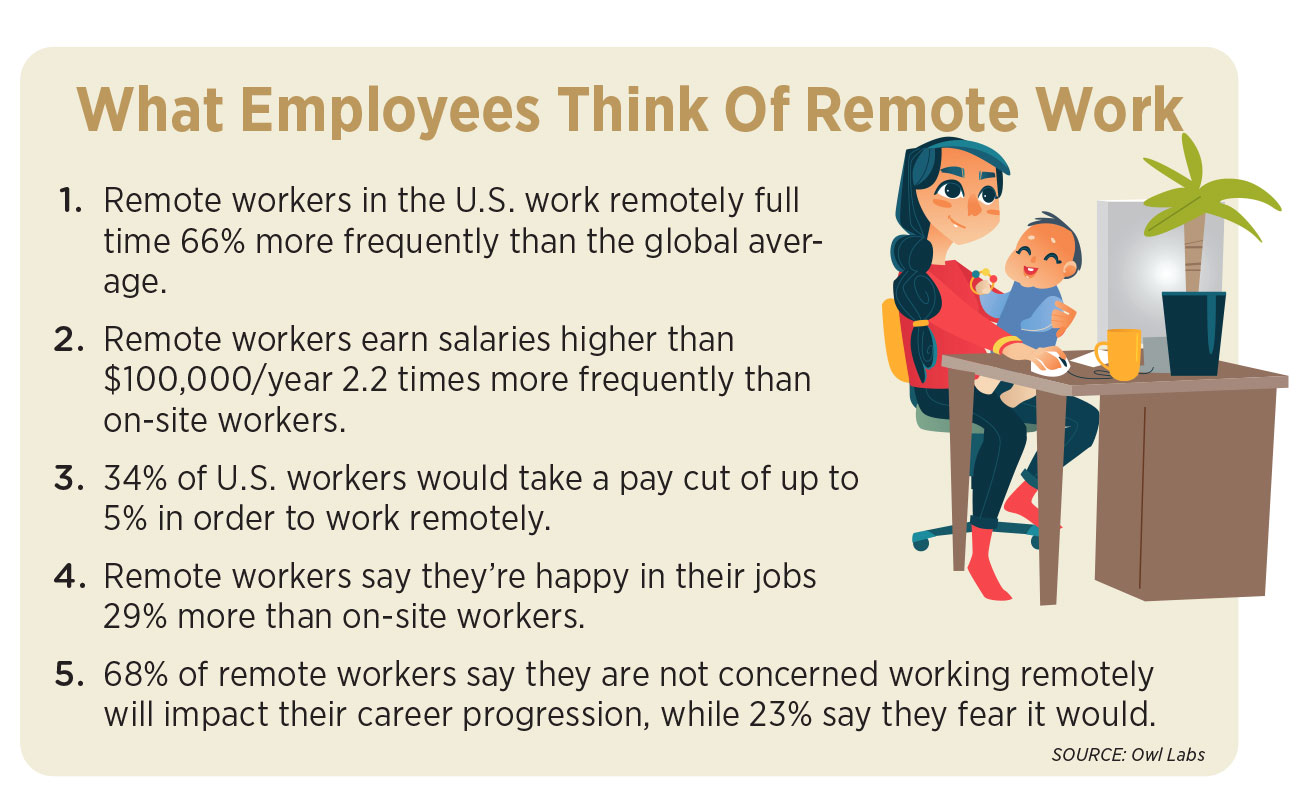
For a year now, many employers have been operating under extremely different conditions. Remote operations are the new business model, at least temporarily, and companies have found their footing in unfamiliar territory. Nowhere is that more true than in the insurance and financial services realm, where traditional business models were the norm. Until March 2020, that is.
Once shutdowns were inevitable and agencies were faced with closing their doors or adopting a new approach, many found their footing quickly. Agencies sent employees home, and business was conducted remotely — in some cases, for the first time ever. Some agencies thrived. That is, until they needed to hire.
For many who already were tasked with relearning what business as usual looks like from a remote setting, hiring without the face-to-face interaction feels like a bridge too far. In the best of times, hiring processes are less than ideal. The process is slow: 52% of recruiters surveyed say their average time to hire for all open positions is more than three weeks, according to Yello’s 2020 Recruitment Operations Benchmark Report.
The process also doesn’t work well. Bamboo HR surveyed 1,000 employed U.S. workers to find out their opinions about onboarding. The survey revealed 31% of employees have left a job within the first six months of being hired. More than two-thirds of that group (68%) who left their jobs said they quit within the first three months.
Moreover, the process is costly. Advertising, interviewing, screening and hiring, as well as onboarding and training, add up. So do lost time, lost productivity and errors. Those costs, according to Deloitte, can range from tens of thousands of dollars to nearly twice the annual salary of one employee.
Fortunately, in this remote environment, there is good news for agency managers. An Owl Labs report shows that remote workers stay on the job 13% longer than on-site workers. That same report shows remote workers are happier in their jobs 29% more often than their on-site counterparts.
In an environment that is custom made for better hiring outcomes, how can we optimize those outcomes even further?
Finding Talent
Better hiring starts with recognizing the flaws in your current hiring plan. Agency managers should ask themselves:
Are we looking for candidates in the right places? How and where your agency finds its candidates is as important as who you hire. Depending on the position you’re hiring for, not all job sites are right for your search. Does the site you use for job posting return specialized search results that are specific to the position you’re hiring for? Are there sites that are more suitable to your industry from which you might find a more specialized talent pool?
Are our job postings optimized? Now that your operations are being conducted remotely, your search does not have to be limited by geography. Your best remote employee could be living in another state. Have you removed geographic boundaries from your job posting in order to attract the most qualified candidates?
Are there biases in our hiring practices? Without realizing it, organizations do have hiring biases. One way to reduce hiring bias is to develop a blind selection process for resumes. Remove names and any information that would identify a candidate’s gender, race or age. From there, your agency can select those resumes that show the skills you’re looking for.
Qualifying Talent
Before the interview, your agency should qualify the talent on those vetted resumes. I recommend an applicant tracking system. An ATS can save hours in recruiting and candidate vetting. You can communicate with applicants, rank them to match with skills requirements, and rank them based on most important and least important job skills.
Also important in your vetting is determining how well your candidate fits the job and the company culture. How would you define your culture? What are the beliefs and behaviors that drive interactions? Are your employees collaborative most of the time, or do you need people who can work independently with minimal guidance?
Assessing Fit
Next, qualify candidates based on soft skills that mesh with your culture. We use cognitive, personality and emotional intelligence assessments to reveal a candidate’s soft skills and mental abilities. How does the candidate you’re considering compare to the culture you’ve defined? How have they developed their careers and the careers of those around them in their previous positions? Does their work style mesh with your team culture?
Selecting Blindly
One of the most overlooked steps to qualifying the best candidates is the blind selection process. We all have inherent, often unconscious biases. We make assumptions about a person based on their age, gender, appearance, college affiliations and more.
To overcome those biases, remove the candidate’s name from the resume. Also remove the college names and year of graduation. Review and rank these candidate packages. Use reference check software to confirm employment history.
Why does this matter? When you use data to drive your interview decision-making, you increase the number of candidates whose experience and skills match your needs.

Interviewing Candidates
Now that you’ve found your top candidates, it’s time for the interview. A first interview conducted in a conference call without video will ensure a blind interview.
That first interview should include:
» A structured interview with behavior-based questions.
» Questions that identify cultural fit.
» A realistic preview of the job.
Now that you have your short list of candidates, it’s time to meet them in person (or on a video call). This is where you’ll be able to dig deeper into the candidate’s background. Prior to the interview, create structured interview questions. The questions should be set up to draw responses that can reveal the candidate’s ability to perform the job in question.
For all interviews, your hiring managers should be trained in how to conduct structured interviews. They should also understand the importance of being consistent with the process.
Onboarding Employees
Congratulations! You found your best candidate. However, the work is not over. In order for your candidate to succeed, they need to be brought on board in a streamlined, efficient way.
Thanks to the pandemic, companies are embracing video and online capabilities. In fact, post-pandemic, companies should consider creating videos and training materials that are easily accessible and available from any location.
Your training materials should include:
» A virtual tour of the company.
» A welcome message from the CEO and executive team.
» An onboarding guide video.
» Video of employees performing the specified job.
» The current team welcoming the new employee.
» How-to videos that address the most common questions related to the job.
Along with training materials, your new employee should be assigned a mentor and an onboarding buddy. Shadowing a mentor, done remotely, can help engage the employee in the job and create a more collaborative, open relationship at the outset.
Working with an onboarding buddy can get the new employee off to a good start as well. The onboarding buddy, usually someone in human resources, will check in with the employee regularly to answer questions, address concerns and make sure things are going smoothly. Any concerns will be addressed before the next check-in, either by the buddy or by the mentor or another team member.
Another key factor to successful onboarding is establishing the new employee as part of the culture. Schedule a team lunch once a week, and hold virtual happy hours and other fun get-togethers. These events not only help your new employee bond with your team but also create a strong employee brand, which helps set expectations and invite collaboration within your agency.
Hiring Success From Anywhere
Employee success is the goal. Whether your agency remains remote or resumes in-house operations, the better your hiring process — and your onboarding of newly hired employees — the better you will be at hiring good employees.
A flexible hiring process can do that. So can understanding your role in making sure that new employees find their footing and feel part of the team, no matter where that team may be located.
Today’s challenges can become your advantages, especially when hiring. By reimagining your hiring process, your agency can attract and retain right-fit talent. It can also serve your agency long into the future and help you through whatever disruptions may come.
from WordPress https://ift.tt/3kyFyVL
via IFTTT


0 Comments